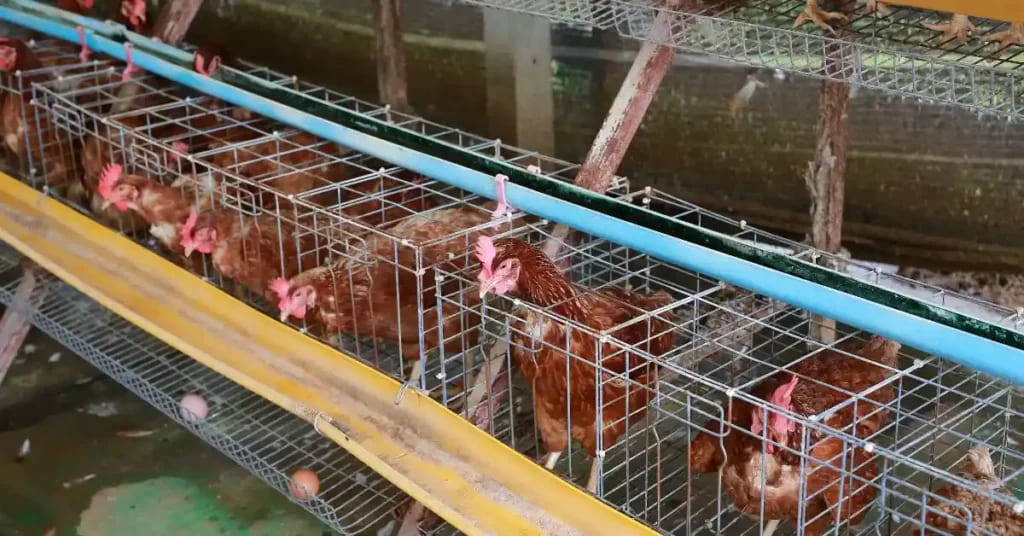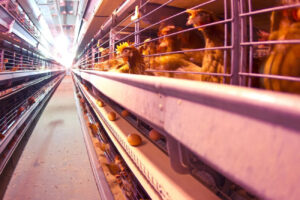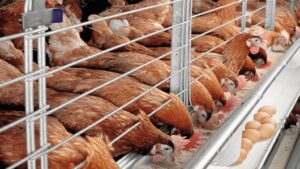So, you’re thinking about starting a poultry farm in Nigeria. Good on you. The single biggest choice you’ll make, the one that decides almost everything else, is the kind of house you build for your birds. This decision hits your wallet, your daily work, and your chickens’ health. The two main options on the table are the Deep Litter System and the Battery Cage System.
Here’s the simple truth: Deep Litter is cheaper to start and lets the chickens act like chickens—walking around freely. But, it takes up more space and you have to be relentless about keeping it clean to prevent diseases. Battery Cages cost a lot more upfront but pack more birds into a smaller space, make management easier, and give you cleaner eggs. Data from Nigerian research bodies like the National Animal Production Research Institute (NAPRI) confirms it’s a trade-off: while deep litter systems can sometimes yield a higher total egg count, battery cages often result in fewer soil-borne diseases and cleaner eggs, impacting overall profitability.
Which one is for you? Well, it all comes down to how much cash you have, how much land you’re working with, and your final goal. This guide lays out all the facts you need for your poultry farming business plan.
Introduction to Poultry Housing in Nigeria
Starting a poultry farm in Nigeria seems like a no-brainer, right? Everyone needs eggs and chicken, and the demand isn’t going anywhere. But turning that demand into actual profit… that takes some serious planning. The real foundation of your farm—literally—is the house you build for your birds. It’s not just a shed; it’s the engine of your whole operation.
Think of it like this. The Deep Litter system, as defined by agricultural bodies like the Food and Agriculture Organization (FAO), is like a big, open bungalow where the chickens have room to roam. The Battery Cage system is more like a modern, efficient apartment block where everything they need is delivered right to their door. Each has its own headaches and its own advantages.
This guide is for the Nigerian farmer on the ground. We’re going to pull apart these two systems, looking at the costs, the space, the good, and the bad. By the end, you should have a clear idea of which path makes sense for your farm.
Alright, now that you know what’s at stake, let’s get into the nitty-gritty of how these systems really work.
Comparing Poultry Housing Systems: A Detailed Breakdown
To make the right call, you’ve got to understand exactly what you’re signing up for. Let’s really look at the Deep Litter and Battery Cage systems, warts and all.
What is the Deep Litter System and How Does It Work?
The deep litter system is an open-floor housing method where chickens are raised on a thick layer of absorbent bedding material like wood shavings or rice husks. The birds move freely on this floor, and their manure mixes with the litter, which is regularly turned to promote natural composting.
Basically, you have a solid concrete floor covered with a thick blanket (4-6 inches) of bedding. The chickens live their lives right on top of this. Their droppings mix with the bedding, and your job is to rake it regularly. This mixes in air, which helps good bacteria break down the waste. When it’s done right, you get a dry, almost compost-like floor that doesn’t stink. It’s a bit of a biological balancing act.
Advantages of the Deep Litter System
- Happier Birds: Chickens get to be chickens. They can walk, scratch, and dust-bathe—natural behaviors the FAO notes are important for welfare. This freedom reduces stress and can cut down on problems like feather-pecking.
- Better Feed Conversion: Some studies from Nigerian universities like FUNAAB suggest that these birds can be more efficient at turning feed into body weight. It’s not a huge difference, but every little bit helps.
- Cheaper to Start: This is the big one. You don’t have the massive upfront cost of cages. Building the house and buying some bedding is much easier on the wallet, which is perfect for beginners.
- Free Fertilizer: After a flock is sold, that used litter is gold for crop farmers. You can bag it up and sell it, which is a great way to make money from chicken manure.
Disadvantages of the Deep Litter System
- Disease Can Spread Like Wildfire: The birds are living on top of their toilet. As Dr. Fatima Isa, a vet in Kaduna, always says, “Wet litter is a disease time bomb.” If that bedding gets damp, ammonia levels spike and it becomes a paradise for nasty bacteria and internal parasites, especially coccidiosis.
- Hard to Spot the Slackers: In a big flock, how do you know which hen isn’t laying? They all use the same nesting boxes. You could be wasting feed on birds that aren’t pulling their weight.
- Dirty, Cracked Eggs: Some eggs will inevitably be laid on the floor. That means more cracked eggs and more dirty ones that you’ll have a hard time selling.
- It Eats Up Space: The question of how much floor space per bird becomes critical here; you’ll need about 1.5 to 2.0 square feet for each layer.
- More Manual Labour: That litter won’t manage itself. You’ll be in there with a rake every couple of days, and it’s physical work.
What is the Battery Cage System and How Does It Work?
The battery cage system is an intensive method where birds are housed in wire mesh cages stacked in multiple tiers. This system maximizes space and automates feeding and water, while sloped floors allow eggs to roll out for easy collection, and manure drops away, keeping birds clean.
Imagine a block of flats for chickens. Each cage holds a few birds (3 to 5). A trough in front delivers food, and nipple drinkers give them water on demand. The cage floor is a gentle slope made of wire mesh. When a hen lays an egg, it rolls safely to a collection tray. All the droppings fall through the floor onto a tray or belt below.
Advantages of the Battery Cage System
- Incredibly Space-Efficient: You can stack cages 3 or 4 tiers high, letting you house way more birds in the same building. If land is expensive where you are, this is a massive plus.
- Management is a Breeze: Is a bird sick? Not eating? Not laying? You’ll spot it immediately. Record-keeping is simple, and removing unproductive birds is easy.
- Clean Eggs, Less Waste: The eggs roll away clean and safe. You’ll get a much higher percentage of perfect, Grade-A eggs ready for market.
- Better Disease Control: Birds aren’t standing in their own filth. This cuts down hugely on diseases that come from manure, which can save you a fortune on medication.
- Less Feed Spillage: The feeder design is usually pretty good at stopping birds from wasting feed.
Disadvantages of the Battery Cage System
- The Cost… Oof: The price of good quality cages is eye-watering, often being the largest single item on a poultry equipment price list in Nigeria.
- Animal Welfare Issues: Let’s be honest, it’s not a great life for the birds. A landmark 2023 scientific opinion from the European Food Safety Authority (EFSA) confirmed that caging birds prevents most of their natural behaviors. This restriction is the primary reason conventional (barren) battery cages have been officially banned in the entire EU since 2012 under Council Directive 1999/74/EC.
- Ammonia Buildup: If you don’t clear out that manure regularly, the smell of ammonia can become overpowering. As the University of Georgia handbook points out, this isn’t just a bad smell—it’s toxic to the birds and harmful to farm workers.
- Tough to Clean Properly: Those wire cages have a lot of nooks and crannies that are a pain to scrub and disinfect properly between flocks.
The Deep Litter System is your low-cost, welfare-friendly entry into poultry, especially for broilers. But be ready for more space and hard work keeping it clean. The Battery Cage System is the expensive, space-saving choice for serious commercial egg producers who want control and hygiene, but it comes with real questions about animal welfare.
Health and Disease Management: Prevention is Better Than Cure
Your housing choice will shape the health problems you face, but a solid prevention plan is what really matters for both systems.
- Deep Litter Health Risks: Your main enemy will be Coccidiosis, a parasite that loves damp litter. You’ll also fight a lot more gut-related issues since the birds are in contact with their droppings. Good litter management isn’t just a suggestion; it’s your main line of defense.
- Battery Cage Health Risks: You’ll see fewer gut diseases, but as the EFSA’s 2023 report noted, the high density can lead to rapid spread of respiratory diseases like Newcastle Disease (ND). You also have to watch out for “cage layer fatigue,” where a good layer literally gives up the calcium from her bones to make eggshells, leaving her with weak, paralyzed legs.
Foundational Biosecurity Measures: Your First Line of Defense
Biosecurity just means keeping germs out. It’s the foundation of a comprehensive poultry farm biosecurity plan. It’s not just a local practice; it’s a global standard. The World Organisation for Animal Health (WOAH, formerly OIE) sets the international guidelines, and their principles are the cheapest, most effective way to stop your entire flock from being wiped out.
- All-In, All-Out: Don’t mix age groups. Raise one batch of birds in a house. When they’re sold, empty the house completely, wash it, disinfect it, and let it sit empty for two weeks. This breaks the cycle of disease.
- Lock it Down: Fence your farm. Lock the gate. Don’t let people wander in and out. Every visitor is a potential carrier of disease. This is a core principle of operational biosecurity according to WOAH.
- Use Footbaths: Put a shallow pan with disinfectant at the door of every pen. Anyone going in or out—no exceptions—steps in it.
- Quarantine New Birds: Never add new birds directly to your flock. Keep them in a separate area for at least three weeks to see if they get sick.
- Control Pests: Rats, wild birds, and flies are walking disease vectors. Use mesh on all openings and have a serious plan for rodent control.
- Dispose of the Dead Properly: Don’t just toss dead birds out back. Bury them deep (at least 4 feet) or incinerate them far away from the other birds.
Standard Vaccination Schedule for Layers in Nigeria
A vaccine prepares a bird’s immune system for a fight. This schedule is a general guide; talk to a local vet to fine-tune it for your area’s specific challenges.
| Age of Birds | Vaccine | Disease Prevented | Method of Administration |
|---|---|---|---|
| Day 1 | Marek’s HVT | Marek’s Disease | Injection (usually at the hatchery) |
| Day 1 | Newcastle (Intraocular) | Newcastle Disease | Eye Drop |
| Week 1 | Gumboro (IBD) – Mild Strain | Infectious Bursal Disease | Drinking Water |
| Week 3 | Gumboro (IBD) – Booster | Infectious Bursal Disease | Drinking Water |
| Week 4 | Newcastle (Lasota) | Newcastle Disease | Drinking Water or Eye Drop |
| Week 6-8 | Fowl Pox | Fowl Pox | Wing Web Stab |
| Week 9 | Fowl Typhoid | Fowl Typhoid | Injection |
| Week 12 | Newcastle (Komarov) | Newcastle Disease | Injection |
| Week 16-18 | Multiple (ND + IB + EDS) | ND, Bronchitis, Egg Drop Syndrome | Injection (before point-of-lay) |
| Every 2-3 months | Newcastle (Lasota) | Newcastle Disease | Drinking Water (during laying period) |
Disclaimer: This is a general vaccination schedule. Always consult with a licensed local veterinarian to create a plan tailored to the specific disease risks in your area.
Emergency Response Plan for a Suspected Outbreak
If you suddenly see more dead birds, sick birds, or a big drop in eggs, don’t wait. Move fast.
- Isolate: Get the sick birds away from the healthy ones. Now.
- Call the Vet: Don’t guess or try to treat them yourself. Call a professional.
- Lockdown: Stop all movement on and off the farm. No people, no birds, no eggs, no equipment.
- Get Samples: The vet will need to figure out what’s going on, which might mean doing a post-mortem.
- Check Your Records: Your notes on vaccination, feed, and daily observations are clues that can help the vet solve the mystery.
Prevention is everything. Solid biosecurity—following principles from global bodies like WOAH—is non-negotiable. Stick to your vaccination schedule like glue. And if you suspect an outbreak, don’t hesitate. Isolate the sick birds and call a vet immediately.
Quick Comparison Table: Deep Litter vs. Battery Cage
| Feature | Deep Litter System | Battery Cage System |
|---|---|---|
| Initial Cost | Low | High |
| Space per Bird | More Space Needed | Less Space Needed |
| Bird Welfare | High (more freedom) | Low (restricted movement) |
| Common Diseases | Coccidiosis, Worms | Respiratory diseases, Cage Fatigue |
| Egg Quality | Prone to dirt & breakage | Cleaner, fewer breakages |
| Labor Needs | High (litter management) | Lower (with automation) |
| Best For | Small-scale, beginners, broilers | Large-scale commercial layer farms |
Now that we’ve laid out the technicals, how does this all apply to the real world of farming in Nigeria?
Making the Right Choice in the Nigerian Context
Choosing your system isn’t a textbook exercise. You have to think about our unique situation here in Nigeria.
How Does Nigeria’s Climate Affect Housing Choice?
Nigeria’s hot and humid climate demands excellent ventilation regardless of the system. In deep litter systems, humidity makes litter wet. As poultry science handbooks from the University of Georgia explain, high temperatures and wet litter dramatically accelerate the release of harmful ammonia gas, increasing the risk of disease. For battery cages, birds can’t escape the heat, making proper roof insulation and airflow critical to prevent deadly heat stress.
What are the Best Bedding Materials for Humid Climates?
In humid climates, the best bedding materials are highly absorbent and dry quickly. Wood shavings are the top choice for their excellent absorbency, though they can be costly. Rice husks are a great, often cheaper alternative with good drainage. Management is key: always start with a thick layer and turn frequently.
- Wood Shavings (Pine/Softwood): This is the gold standard for a reason. It soaks up moisture well. The downside? It can be expensive. And please, avoid fine sawdust—it causes breathing problems for the birds.
- Rice Husks: A brilliant and often cheaper option, especially if you’re near a rice mill. They are light, easy to turn, and don’t pack down easily, which helps keep the surface dry.
- Chopped Straw or Grass: This is a last resort. It doesn’t absorb much and gets “caked” (hard and wet) very quickly, which is just asking for trouble.
How Do Local Material Costs Impact the Decision?
Local material costs are a major factor. For deep litter, the price and availability of bedding like wood shavings or rice husks vary by region. For battery cages, it is almost always more cost-effective to use local fabricators in cities like Lagos, Ibadan, or Onitsha rather than importing expensive foreign cages.
Does the Nigerian Market Prefer Eggs from a Certain System?
Honestly? Not really. Right now, most Nigerian shoppers are looking for one thing: affordable eggs. The idea of “free-range” or “organic” eggs from deep litter farms is still a very small market, mostly in places like Lekki or Asokoro. For the big buyers—hotels, supermarkets—they often prefer the clean, consistent supply from a cage system.
Should I Use a Different System for Broilers vs. Layers?
Yes, absolutely. The deep litter system is the industry standard and highly recommended for broilers (meat chickens) because they need to move around to develop strong legs. Battery cages are primarily designed for layers (egg-laying chickens) and are generally unsuitable for raising healthy broilers. This fundamental difference is central to the process of choosing between layers, broilers, and noilers for your farm.
Think local. Your main enemy is heat and humidity, so prioritize ventilation no matter what. For deep litter, find a dry, affordable bedding material like rice husks. For cages, buy from local welders to save money. And remember, for broilers, deep litter is the only real choice.
What Nigerian Regulations Must Poultry Farmers Follow?
In Nigeria, poultry farmers must comply with regulations at the local, state, and federal levels. This includes obtaining building permits from your Local Government’s Town Planning Authority before construction, using only NAFDAC-approved feeds and drugs, and potentially conducting an Environmental Impact Assessment (EIA) for large-scale farms.
What Building Permits Are Required?
Before you lay a single block, go to your Local Government’s Town Planning Authority. They have rules about where you can build a farm (hint: not in a residential estate). You’ll need to get your building plan approved. Trying to skip this step can lead to big fines or even them tearing your building down.
Which Agricultural Agencies Regulate Poultry Farming?
A few main bodies are watching what you do:
- NAFDAC: They are the police for all animal feeds, drugs, and vaccines. If it’s not NAFDAC-approved, don’t let it near your birds.
- SON (Standards Organisation of Nigeria): They set quality standards for equipment, including cages. A SON seal can be a good sign of quality.
- Federal Department of Veterinary and Pest Control Services: These are the people setting the national guidelines for disease control. It pays to listen to them.
Are There Environmental Rules for Large Farms?
Yes. Once you get big (think 5,000+ birds), you can’t just dump your waste anywhere. You may need to do an Environmental Impact Assessment (EIA) to show how you’ll manage your farm’s impact on the local area. The Ministry of Environment takes this seriously.
Don’t ignore the paperwork. Get your building permits before you start. Use only NAFDAC-approved products. And if you’re planning to go big, be prepared to deal with environmental regulations. It’s a headache, but it’s better than getting shut down.
Implementation Guide: How to Build Your Poultry House
This section gets into the practical steps of construction. Getting the layer chicken housing specifications right isn’t just a suggestion; it’s essential. While many people look for a commercial poultry house design PDF, this guide gives you the core ideas behind those plans.
What are the Essential Features of any Poultry House in Nigeria?
Every successful poultry house must have key features that align with global biosecurity standards. The World Organisation for Animal Health (WOAH) emphasizes a location away from other poultry farms, a design that’s easy to clean, and controlled entry points with facilities like footbaths to prevent disease introduction.
Step-by-Step Guide for a Deep Litter House
- Site Selection: Find a quiet spot with good drainage. Don’t build right next to a noisy road.
- Foundation and Floor: A smooth, strong concrete floor is a must. It keeps pests out and makes the final clean-out much easier.
- Walls and Roofing: Build your house longways from East to West. Use low “dwarf” walls (about 1.5 ft) and cover the rest with strong wire mesh for airflow. The roof should hang over the sides (about 3 ft) to block rain and sun.
- Equipment: Put in enough drinkers and feeders. Don’t make the birds fight for food. Build your nesting boxes in a quiet, dark corner of the house.
- Bedding (Litter): Before the birds arrive, spread your bedding material 4-6 inches deep.
- Litter Management: This is your main job. Rake the litter every 2-3 days. If you see any wet, caked spots (especially near the drinkers), get them out immediately.
Step-by-Step Guide for a Battery Cage House
- House Construction: Same rules apply for the site and building orientation. The size of the house will depend on your cages. Make sure to leave walkways of at least 3 feet between the rows.
- Choose and Install Cages: Buy from a good supplier. Feel the wires for sharp edges that could hurt the birds. A thick galvanized coat is better than a thin, shiny one. Assemble them on a flat floor.
- Automated Systems: Connect your nipple drinkers to the overhead tank. Set up the feeding troughs.
- Manure Management: Have a plan. The simplest way is to scrape the manure trays or floor with a shovel into a wheelbarrow every 2-3 days. Don’t let it pile up.
Building it right is crucial. A deep litter house needs a solid floor and good ventilation. A battery cage house is built around the cages, so your layout and installation have to be spot-on from the beginning. Don’t cut corners on construction.
How Much Does It Cost to Build a Poultry House?
The cost depends entirely on the system. For 500 layers, a deep litter house might cost between ₦1 million and ₦1.7 million to set up. A battery cage system for the same number of birds is significantly more expensive, ranging from ₦1.9 million to over ₦3.2 million, with the cages being the largest expense. Remember, these are 2025 estimates. Prices for materials and labor can change quickly, so always get current quotes from your local suppliers before finalizing your budget.
Cost Analysis: What’s Your Budget? (Estimates in Naira)
Let’s talk Naira and Kobo. For a 500-layer farm, what are we looking at? (For a smaller example, see the cost of starting a 200-layer farm).
Deep Litter System (500 Birds)
- House Construction: ₦800,000 – ₦1,500,000
- Equipment (Feeders, Drinkers, Nests): ₦150,000
- Initial Bedding Material: ₦50,000
- Total Estimated Initial Cost: ~₦1,000,000 – ₦1,700,000
- Ongoing Costs: Buying more bedding, paying for the labor to manage it.
Battery Cage System (500 Birds)
- House Construction: ₦700,000 – ₦1,200,000 (The house can be smaller)
- Battery Cages (for 500 birds): ₦1,200,000 – ₦2,000,000
- Equipment (included with cages): ₦0
- Total Estimated Initial Cost: ~₦1,900,000 – ₦3,200,000
- Ongoing Costs: NEPA bills for any automation, fixing broken cage parts.
What is the Cost of Automated Feeding Systems for Poultry?
Automation costs vary. A simple, semi-automated feeding hopper that you push manually can cost between ₦150,000 and ₦300,000. A fully automated system for a 1,000-5,000 bird farm, with silos and chain feeders, is a major investment, costing anywhere from ₦2 million to over ₦7 million.
What are the Minimum Space Requirements for Layers in Nigeria?
Space requirements differ by system. For a deep litter system, FAO guidelines suggest a density of no more than 7-8 birds per square meter, which translates to roughly 1.5 to 2.0 square feet per layer. For conventional battery cages, the standard is much smaller, at about 450 to 550 square centimeters per bird.
The deep litter system is your cheapest way in. The battery cage system will cost you at least double to start. And don’t forget the space difference: deep litter needs a lot more floor area per bird than the compact battery cage setup.
Advanced Considerations and Future Trends
To run a farm that lasts, you need to think beyond the basics.
What are the Different Levels of Automated Poultry Systems?
You have options. “Manual” means you do everything by hand. “Semi-automated” is the middle ground—maybe you have nipple drinkers but still feed by hand. “Fully automated” is the big-league setup with conveyor belts for manure and automatic feeders. It costs a fortune but saves a ton on labor.
How Can I Convert My Deep Litter House to a Battery Cage System?
Many farms start on deep litter and move up to cages. It’s a smart way to grow. Here’s how you do it.
- Plan and Measure: Don’t just buy cages. Measure your pen first. Draw a layout on paper. Make sure you leave a 3-foot walkway between the rows. This tells you exactly how many cages you can actually fit.
- Empty and Sanitize: Sell your last flock. Clear out every single piece of old litter. Scrape the floor. Get a pressure washer and blast the walls, floor, and mesh first with soap, then rinse thoroughly. This physical cleaning removes the organic matter that germs hide in.
- Disinfect and Rest: After washing, disinfect the entire house. Then, lock it up and leave it empty for at least two weeks. This kills off any germs waiting for your new birds.
- Repair and Install: Check the concrete floor for cracks and fix them. Now you’re ready to assemble your new cages.
- Connect Everything: Hook up the drinker lines to your water tank. Set up the feeders. You’re now a cage system farmer.
Are There Hybrid Systems That Combine Both Methods?
Yes, and they can be interesting. Enriched cages, as specified by EU law, are a big one overseas—they are cages with more room, perches, and a nesting area. They are a compromise between welfare and efficiency. Some people also try a deep litter floor with raised slatted platforms for the feeders and drinkers to keep things cleaner.
How Can I Manage Environmental Impact and Waste?
Don’t just be a farmer; be a smart business person. That manure is a resource. You can dry it, bag it, and sell it as fertilizer. If you get really big, you could even look into a biogas diggester, which turns chicken waste into cooking gas or electricity. That’s how you build a truly sustainable poultry production business in Nigeria.
Thinking ahead is key. You can upgrade from deep litter to cages later by carefully converting your existing house. Automation can save labor but costs a lot. And managing your waste properly isn’t just good for the environment—it can be another source of income.
Frequently Asked questions (FAQ)
Q1: Which system is better for egg production in Nigeria?
Honestly, both can give you great results if you manage them well. Some studies show deep litter flocks lay more eggs overall. But with cages, you get cleaner eggs and fewer breakages, so you might end up with more sellable eggs. The best system is the one you manage the best.
Q2: What is the cost of building a 1000-bird poultry house in Nigeria?
For 1000 birds, a deep litter house will likely cost you between ₦1.8 million and ₦2.5 million. If you’re going for a battery cage setup, you’re looking at a much bigger bill—somewhere between ₦3.5 million and ₦5 million, because the cages alone are so expensive.
Q3: How do I manage smell and disease in a deep litter system?
It’s all about keeping the litter dry, which is the secret to how to keep a chicken coop from smelling. That means top-notch ventilation, fixing any leaky drinkers the second you spot them, and turning the litter with a rake every few days. If it starts to smell like ammonia—a sign it’s too wet—you have a problem that could lead to respiratory disease.
Q4: Are battery cages cruel to chickens?
This is a tough one. From an animal welfare perspective, yes, the science is clear that they are very restrictive. It’s why they are illegal in many places, including the entire EU (Council Directive 1999/74/EC). But from a purely practical standpoint, they protect birds from diseases on the ground. As a Nigerian farmer, you have to weigh those ethical questions against the real-world benefits of hygiene and efficiency.
Q5: Which system is more profitable for a beginner in Nigeria?
For a beginner without a lot of cash, deep litter is almost always the smarter start. The lower entry cost means less risk. You can learn the ropes of poultry farming, and if you’re successful, you can use your profits to upgrade to a cage system later.
Q6: How do I deal with pests like rats and soldier ants?
Dealing with pests like rats and soldier ants requires a focus on prevention. Learning how to keep rats out of the coop is a crucial skill. A solid concrete floor is a good start. Keep the grass and bushes around your pen cut short so pests have nowhere to hide. For soldier ants, many old-school farmers swear by pouring a line of used engine oil around the foundation of the house—it creates a barrier they won’t cross.
Final Recommendations
So, after all that, what’s the final word?
There is no magic answer. The “best” system doesn’t exist. The right system is the one that works for you—for your pocket, your land, and your goals.
If you’re just starting, have a tight budget, or are raising broilers, the Deep Litter System is probably your best bet. It lets you get in the game without breaking the bank.
If you have serious capital, limited land, and your goal is large-scale, efficient egg production, then the Battery Cage System is where you’ll likely end up. It’s a machine built for one purpose: producing clean eggs in high volume.
For most people, the smartest move is to start small with a deep litter system. Learn the business. Make your mistakes on a small scale. Once you’re confident and have some profit built up, you can make the big leap to a cage system.
No matter which house you build, your success will come down to your management. Give your birds clean water, good feed, fresh air, and a secure home, and you’ll have a real shot at building a profitable poultry business in Nigeria.

Oladepo Babatunde is the founder of ChickenStarter.com. He is a backyard chicken keeper and educator who specializes in helping beginners raise healthy flocks, particularly in warm climates. His expertise comes from years of hands-on experience building coops, treating common chicken ailments, and solving flock management issues. His own happy hens are a testament to his methods, laying 25-30 eggs weekly.



